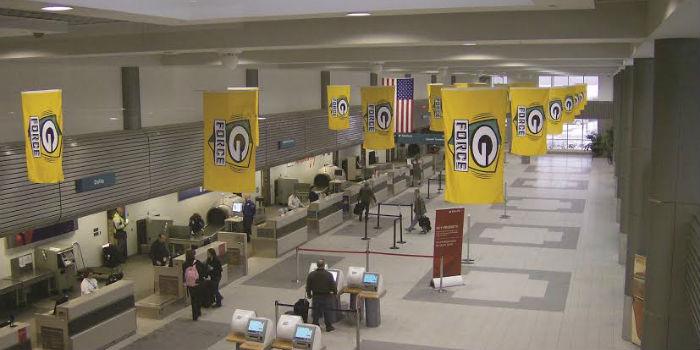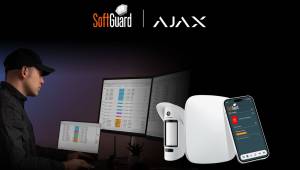 It seems that overnight, most of the airports in our Latin American cities, especially in South America, are taking the fire safety of their occupants more seriously.
It seems that overnight, most of the airports in our Latin American cities, especially in South America, are taking the fire safety of their occupants more seriously.
By Jaime A. Moncada*
For example, the airports of Bogotá, Buenos Aires, Guayaquil, Lima, Montevideo, Quito and Santiago have been protected with automatic sprinklers, alarm systems and adequate emergency exits.
The expansions of the airports of Panama City and San Jose de Costa Rica have done the same as well. It's not just the new airports that have increased their level of fire safety. For example, Dominican airports, as they remodel, are increasing their levels of fire safety.
There are, however, many airports in Brazil, Central America and Mexico that have significant deficiencies, such as a lack of automatic sprinklers, inadequate access bridges and an evacuation system that has not been designed under the rigor of a modern human safety code.
An airport has unique risks and characteristics, which must be rigorously evaluated through an international reference regulation (in fire safety, it involves the use of the regulations of the National Fire Protection Association, known as NFPA or the International Civil Aviation Organization, known as ICAO) with the expert assistance of a fire protection engineering consulting firm.
From the point of view of your fire safety, the evaluation of an airport should begin in its design although many existing airports have contracted the development of Fire Safety Master Plans to evaluate what needs to be done, and how to carry it out in the best way for the airport to improve its level of fire safety.
The Disembarkation Bridge: I, as a frequent flyer, immediately get off the plane from the moment I enter the disembarkation bridge, I realize if the airport has been designed with the assistance of a fire safety specialist. This bridge must offer an adequate evacuation route for 5 minutes in conditions equivalent to a fire free of jet gasoline below the bridge1.
Disabling the aircraft's emergency doors is a standard procedure that is performed once the aircraft arrives at the terminal. Therefore, if there is a fire outside (or inside) the aircraft, the only way to evacuate is through the front door connected to the bridge and to the terminal.
How many times will you remember an airplane landing bridge with glass walls that obviously do not offer the 5 minutes of fire resistance? From then on things tend to get worse: lack of automatic sprinklers, poor evacuation signaling and metal structural elements without adequate fire resistance.
The Passenger Terminal: NFPA 415, "Standard on Airport Terminal Buildings, Drainage of Fueling Ramps, and Boarding Bridges" is the fire safety document that all terminals should follow. In this standard is found, in addition to the criteria that must meet the access and disembarkation bridges of the aircraft, the type of construction, the evacuation system, as well as the requirements of electrical safety and fire protection of the terminal.
The airport is a "safe" place, in that access and eviction is carried out through rigorous formalities that should not compromise the safety of passengers or aircraft. The airport is, except for those who work there and the most frequent travelers, a place unknown to most of its users.
There are two main risks here. On the one hand, exposure to a fire from the fueling operations on the ramp and, on the other hand, in the case of an indoor fire, a building with a high occupancy load. Evacuation in the event of a fire is therefore complex.
A fire alarm might sound if, for example, on the ramp there is a gasoline spill that has caught fire. In this particular case, it would be very dangerous to vacate the waiting rooms from the terminal to the ramp because of the risks that this entails (not even think about the security problems that would be generated). NFPA 101, Life Safety Code2, establishes the criteria for the evacuation system that an airport terminal must meet.
In the event of a fire on the ramp, attention should not only be paid to the design of the boarding bridges, but also to the facades and stained glass windows that separate the terminal from the ramp. If the façade is very close to where planes can reach, it has to have water sprinklers in the stained glass window.
NFPA 415 also requires that a terminal with an area3 greater than 1115 m2 must be protected with automatic sprinklers to its full extent. Many terminals have immense roofed spaces that form atriums, where the airline check-in counters are, and in which smoke management must also be evaluated by experts.
Control Tower: The air traffic control tower is another part of the terminal that requires a lot of care as the tower fulfills a critical public safety function. That is, it would be unthinkable to evacuate the control tower during a fire because of the implications that this entails. By the way, this is one of the few buildings where it is allowed to be protected by a single staircase, which has to be designed smokeproof4.
Hangars: These buildings are built primarily for aircraft maintenance and repair and present unusual fire protection problems. It is not a common procedure to evacuate fuel from the plane before it enters the hangar. Consequently, there is the potential to have a large amount of flammable liquids within a roofed area and where hot work is commonly present.
NFPA 409, "Aircraft Hangar Standard" defines the characteristics of the fire protection means that protect a hangar. Here the most common practice is to protect these buildings with water-foam sprinklers, located on the roof of the hangar, and designed following the NFPA 16 standard, "Standard for the Installation of Water-Foam Sprinklers and Sprinklers". However, the wings of the aircraft make an extinction below these unlikely, so special floor sprinklers or oscillating monitors with foam are also used, usually with aqueous film forming foam solution (called AFFF).
A point of care is the design of the detection system, which must work not only quickly but effectively, in the event of a fire. The most reliable (with fewer false alarms) are thermal detectors, but in enclosures with very high ceilings they can be very slow. Flame detectors are faster, but have had integrity and reliability issues, causing false alarms.
La Rampa and La Pista: Large amounts of flammable liquids are continuously handled on the ramp. NFPA 415 establishes the criteria for drainage and inclination on the ramp with the goal of preventing unnecessary exposure of the terminal in the event of a fuel spill. NFPA 407, "Standard for Aircraft Fueling" establishes criteria for the safe handling of fuel during its refueling process.
On the tarmac, aircraft rescue and firefighting procedures (known as "ARFF") are also another area of deep specialization and challenge at the time of an incident. Many times the difference between life and death is only a few seconds. The aluminum walls of an intact aircraft can offer perhaps 3 minutes of survival to the occupants of the aircraft, when they have been exposed to an outside fire5.
This is why it is very important to audit the rescue and firefighting service (SEI) not only to certify that they comply with the NFPA regulation (NFPA 402. 403, 422 and 424), but with the ICAO standards. ARFF equipment must also be audited in accordance with NFPA 404, 405, 1001, 1003 and ICAO standards. Although an incident on the runway is unusual, the rescue and firefighting brigade must always be ready and competently prepared.
An airport is an occupation with unusual risks, and specific and well-founded protection criteria. Fire safety is perhaps one of the most regulated areas in the modern world, and the expert interpretation and faithful use of international reference regulations is essential to achieve adequate levels of fire safety.
Below is a list of NFPA standards that have to do with the safety of an airport and aircraft, including several on rescue and firefighting.
- NFPA 402
- Guide to Aircraft Rescue and Firefighting Operation
- NFPA 403
- Standard for Aircraft Rescue and Airport Fire Fighting Services
- NFPA 405
- Rule on the Periodic Competence of Airport Firefighters
- NFPA 407
- Standard for the Supply of Fuel to Aircraft
- NFPA 408
- Standard for Portable Manual Fire Extinguishers, in Aircraft
- NFPA 409
- Standard on Aircraft Hangars
- NFPA 410
- Aircraft Maintenance Standard
- NFPA 412
- Standard on the Evaluation of Foam-Based Equipment for Aircraft Rescue and Fire Fighting
- NFPA 414
- Fire Rescue and Fire Fighting Vehicle Standard
- NFPA 415
- Standard for Airport Terminal Buildings, Drainage of Fueling Ramps, and Boarding Bridges
- NFPA 418
- Standard for Heliports
- NFPA 422
- Guide to Aircraft Accident/Incident Response Assessment
- NFPA 423
- Standard for the Construction and Protection of Aircraft Engine Test Facilities
- NFPA 424
- NFPA 1001
- NFPA 1003
- Airport and Community Emergency Planning Guide
- Standard on Qualifications of Professional Firefighters
- Standard on Qualifications of Professional Airport Firefighters
- 1. NFPA 415-2013, Art. 6.1.1.
- 2. NFPA 415-2013, Art. 4.3.1.
- 3. Refers to the total area used for gathering people throughout the airport (NFPA 415-2013, Art 4.5.1.1).
- 4. NFPA 101-2015, Art. 11.3.4.4.4 and 5.
*Jaime A. Moncada, PE is a director of International Fire Safety Consulting (IFSC), a fire protection engineering consulting firm based in Washington, DC. and with offices in Latin America. He is a fire protection engineer graduated from the University of Maryland, co-editor of the NFPA Fire Protection Handbook, Vice President of the Society of Fire Protection Engineers (SFPE) and directs NFPA professional development programs in Latin America. Moncada's email address is [email protected].

























Leave your comment